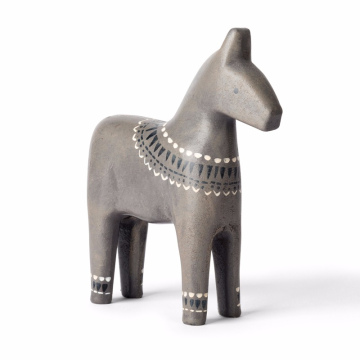Understanding the Spanish Language
The Spanish language, known as Español or Castellano, is a Romance language that originated from the Latin spoken by the inhabitants of the Iberian Peninsula. Its development began as a dialect of vulgar Latin, which evolved due to various influences from the Visigoths, Muslims, and other cultural entities that interacted with the region over centuries. The Reconquista in the late 15th century marked a pivotal moment in the language's evolution, allowing the unification of the various dialects into a more standardized Spanish that we recognize today.
Spanish has emerged as one of the most spoken languages globally, with over 580 million speakers, making it the second most widely spoken language after Mandarin Chinese. Its reach extends across continents, primarily in Latin America and Spain, but it is also spoken in parts of the United States, making the language a vital component of the cultural and linguistic landscape of the modern world. The richness of Spanish is evident in its diverse dialects, which are influenced by regional histories, indigenous languages, and contemporary developments.
In today's global context, the importance of the Spanish language cannot be overstated. It serves as a crucial medium for international communication, diplomacy, and commerce, facilitating partnerships across Spanish-speaking countries and beyond. Furthermore, Spanish is a significant language of culture, contributing immensely to literature, cinema, and art, thereby fostering a deeper understanding of the Hispanic world. The global rise of Spanish has also influenced educational policies, with many countries incorporating Spanish language programs into their curricula, further solidifying its status as a key player in global dialogue and cultural exchange.
Regional Dialects of Spanish in Spain
Spain is a linguistically diverse country, characterized by a variety of regional dialects that reflect its rich history and cultural tapestry. Among these, Castilian Spanish, widely recognized as the standard form of the language, serves as the official dialect spoken throughout most regions. It is characterized by its distinct pronunciation, particularly in the pronunciation of the letters 'c' and 'z', which are articulated as a voiceless dental fricative, creating a unique phonetic identity.
Moving to the southern region, Andalusian Spanish showcases notable variations. This dialect is marked by its relaxed pronunciation, often dropping the final consonants of words and altering vowel sounds. Such features lend a melodic quality to the spoken language, which is heavily influenced by historical interactions with Arabic and Romani languages. These nuances not only impact communication but also encapsulate the vibrant cultural heritage of Andalusia.
In the northeastern part of the country, Catalan Spanish stands out. In Catalonia, language use diverges significantly, with the Catalan language being co-official alongside Castilian. This bilingualism fosters a unique lexical blend, where speakers interchangeably use Catalan words and phrases within their Spanish dialogues. In addition, Catalan phonetics can exhibit distinct characteristics, such as the pronunciation of certain vowels and consonants, which are inherently different from Castilian forms.
Galician, spoken in the northwest region of Galicia, reflects another layer of linguistic diversity. It shares common roots with Portuguese, leading to unique vocabulary and pronunciation variances. The preservation of traditional Galician expressions highlights the region's cultural identity and its profound connection to the natural landscape.
Lastly, Basque, found in the Basque Country, presents a remarkable case. Unlike the other dialects, Basque is unrelated to the Romance languages and has its own linguistic structure. Its distinctiveness and historical significance contribute to the region's pride, while also illustrating the complexities of dialect prestige within Spain.
Overall, these regional dialects not only enrich the Spanish language but also contribute to a deeper understanding of the sociolinguistic dynamics within Spain, revealing the intricate relationship between language, culture, and identity.
Influence of Other Languages on Spanish Dialects
The Spanish language, known for its rich diversity, has been profoundly shaped by the influence of various languages throughout its history. This influence is evident in numerous Spanish dialects, which have emerged as a result of language interactions and borrowing. Indigenous languages, such as Quechua and Nahuatl, have contributed significantly to the lexicon of Spanish, particularly in regions of Latin America. For instance, words related to flora, fauna, and agriculture often retain their indigenous roots, illustrating the blending of cultures and languages.
Additionally, regional languages such as Catalan, Galician, and Basque have also left their mark on Spanish dialects. These languages, coexisting within Spain, have influenced the vocabulary and pronunciation of the surrounding Spanish dialects. The integration of words and phrases from these languages showcases the coexistence of linguistic traditions, while also highlighting the regional identities that shape the way Spanish is spoken across the country.
The phenomenon of code-switching further exemplifies the complex interactions within multilingual communities. Bilingual speakers often navigate between languages fluidly, using elements from both to enhance communication. This practice can enrich the Spanish spoken in specific areas, as speakers incorporate vernacular words from other languages, reflecting their cultural heritage and creating unique dialectical variations.
Moreover, the colonization of various regions by Spain resulted in significant lexical influences from the languages of those countries. The interaction between Spanish and the local dialects has given rise to distinct forms within the Spanish language, revealing the intricate tapestry woven by historical and cultural exchanges. By examining these influences, we gain a deeper understanding of how history and language intertwine, ultimately enriching the diverse forms of Spanish spoken today.
Preservation and Evolution of Spanish Dialects
The preservation of Spanish dialects in a rapidly globalizing world presents both challenges and opportunities. As globalization facilitates communication across vast distances, it often leads to a homogenization of language. In this context, Spanish dialects could risk fading into obscurity, adversely affected by the dominance of global languages, particularly English. However, the influence of media and technology also offers novel platforms for these dialects to thrive, harnessing social media and digital content to reach wider audiences.
Communities across Spain and Latin America have recognized the urgency to maintain their linguistic heritage. Various initiatives aim to safeguard these dialects through comprehensive language revitalization projects. These efforts often focus on documentation, community engagement, and education. For instance, linguists collaborate with local speakers to compile dictionaries, create educational materials, and develop programs that celebrate the unique aspects of their dialects. Such initiatives not only promote linguistic diversity but also foster cultural pride within these communities.
The role of education is particularly pivotal in sustaining dialects amid globalization. Bilingual education programs incorporating regional Spanish variants allow students to appreciate their heritage while equipping them for external engagement. Encouraging young people to embrace their dialect teaches them the value of cultural nuances, ensuring that these rich linguistic traditions are not lost to modern influences.
Reflecting on the future of Spanish dialects, it is essential to recognize their integral role in the mosaic of global languages. While challenges consistently arise, the concerted efforts by communities and linguists provide a beacon of hope for the continuation of diverse dialects. Ultimately, preserving these linguistic variations is crucial, not merely for communication but also for the sustenance of cultural identity and heritage in an ever-changing world.








